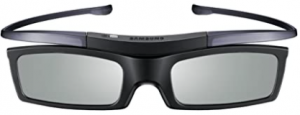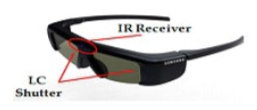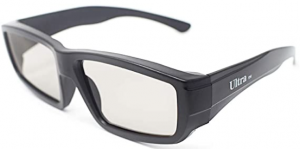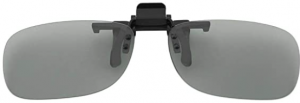Contents
3D Video
| Phase / Area | Examples | In case of TV | |
| 1. Creating media | Special 3D camera, dual lenses, and/or more or less post-processing of shot media | (lot’s to learn…) | |
| 2. Distribution | Optical disc (3D Blu-ray), file, stream | on Blu-ray optical disc, Netflix stream (2012-2017?!) | |
| 3. Player capable playing, reading/handling distribution |
HW, SW… (more on Software below) | Must have 3D Blu-ray player, or some streaming app/HW | |
| 4. Screen support | Specialized TVs or monitors with specific graphics capabilities (which ‘99%’ of the market doesn’t have since 2016sh…), or | Must have 3D capable TV, and there are different techs…!) |
|
| 5. Glasses | Active, Passive, or Anaglyph | Must have glasses supporting TV technology in question…! |
History (3D TV) 2010-2015
- 2010: various products are first introduced on markets around the world
- TVs, Blu-ray 3D DVD players, DVDs, DVB 3D-TV std, 3D channels from broadcasters
- 2012: J&P gets a Blu-ray player that has 3D capability- Home Theater System – HT-E6500WZA (2012-08)
- 2013: J&P gets a new TV, which happened to have 3D capability – TV Samsung UN55ES7100F 55″ 1080p 3D LED-LCD HDTV with Wi-Fi® (2013-06)
- Include buying a couple of Blu-ray disks with media for fun (Avatar, Wreck-it Ralph)
- 2013: decline of industry starts (broadcasters stops 3D channels, manufacturers of TVs stops including 3D capability, …)
- (4K UHD announcements in 2012-2013, next gen. TVs is coming [wikipedia]. Note that 4K TV does NOT have 3D capabilities.)
- 2016: “most manufacturers stopped making them in 2016.” [lifewire, Nov 2, 2020]
- i.e. TVs that actually HAVE 3D capabilities are year models around 2010 and 2015
- “Samsung didn’t produce a 3D TV in 2016” [digitaltrends Jan 26, 2017]
- 2020: J&P realize actually haven’t though of 3D TV for years and created this page in December 2020.
Resources
- en.wikipedia.org/wiki/3D_television
- en.wikipedia.org/wiki/DVB_3D-TV
- google.com/search?q=tv+with+3d+technology
- google.com/search?q=3d+tv+history
- 3D TV is officially dead, but a band of fanatics won’t let go – digitaltrends.com/home-theater/manufacturers-kill-off-3d-tv-home-theater-enthusiasts-fire-back/ (Jan 26, 2017)
- 3D TV is Dead—What You Need To Know – lifewire.com/why-3d-tv-died-4126776 (Nov 02, 2020)
J&P Lab
J&P got the following equipment in the lab for working with 3D:
- Samsung TV UN55ES7100F (2012 model)
- Samsung 3D Active Glasses SSG-5100GB
- Home Theater System – HT-E6500WZA (2012 model) including 3D Blu-ray player
- Very few disks with 3D material
Sources of Materials
Blu-Ray Discs w/ 3D Video Material
Of hundreds of optical discs in the lab (DVDs, Blu-rays), only have 4 films with actual 3D material:
| Type | Est count | Notes |
| BLU-RAY 3D | 4 films | 1) Avatar, 2) Jurassic World 3D (4th film in Jurassic Park – series), 3) Pirates of the Caribbean on Stranger Tides (4th film in Pirates of the Caribbean – series), and 4) Wreck-it Ralph (Disney cartoon) |
More also in /mlabs/video/players/tvhw/#Discs_w/_Video_Material which has more details on different types of origin of 3D content:
1. Shot in 2D, converted (post processing) to 3D
2. Shot in 3D
3. Computer animated.
en.wikipedia.org/wiki/List_of_Blu-ray_3D_releases
Netflix and 3D Streaming
2012-2017?! (From more general research, Netflix stopped 3D streaming BEFORE at least 2018.)
(No date on this:) From help.netflix.com/en/node/64067?ba=SwiftypeResultClick&q=3d (retrieved Dec 2020):
Is 3D streaming available from Netflix?
We no longer offer 3D streaming.
In 2012, when we launched 3D streaming, we were excited and moved by the efforts of our industry partners who made great 3D technology and began to make movies and shows in 3D. Despite that early enthusiasm, 3D viewing at home failed to captivate consumers.
In recent years, many major TV manufacturers have announced that they will phase out 3D TV production. Many studios have also announced their move away from 3D production. Due to these factors, we no longer offer 3D streaming.
2018, Nov: List of 3D Titles on Netflix – [whats-on-netflix.com, Nov 22, 2018]
Lists 18 movies as supposedly available at least in Nov 2018.
J&P: DONT’T THINK THIS IS TRUE.
2021, Jan: 8 Best 3D Movies on Netflix Right Now [thecinemaholic.com, Jan 6, 2021]
Lists 8 movies as supposedly available still in Jan 2021…?!?
J&P: DONT’T THINK THIS IS TRUE.
- Is Article wrong, not updated properly
- Or is Netflix not communicating completely truthfully, and continue to provide some materials in 3D…?
- Looks like the former, article is wrong – when search on 3D on Netflix no media is listed but only (2D) alternatives
YouTube and 3D Video
google.com/search?q=3d+video+on+youtube
- Channels
- Media
Glasses – Active, Passive, or Anaglyph
| Type | Used by | Cost for glasses | J&P Lab |
| Active Shutter 3D | Panasonic, Samsung | expensive | Got 4 pairs |
| Passive Polarized 3D | LG, Vizio | inexpensive | None |
| Anaglyph 3D, aka red/blue | (cinemas, computers) | dirt-cheap | Misplaced, should have some somewhere…… |
- Active Shutter 3D: google.com/search?q=Active+Shutter+3D
- when the technology was actually used, in the first half of 2010s, a pair of glasses was up to $100 or so per pair, yes – quite expensive little things…
- Passive Polarized 3D: $5-$10 per pair. google.com/search?q=passive+polarized+3d+glasses
- Anaglyph: From like $0.10 (paper) to $8-$10 for a pair. google.com/search?q=anaglyph+3d+glasses
Active:
The second photo above highlights the active parts – communications with the TV (infrared) and technology alternatively shuttering left and right side glasses. (And yes, batteries / power is of course required in glasses.)
Passive:
An advantage with Passive is that one can create clip-on variants that could be fitted onto ones regular glasses, for the ones using such.
Anaglyph 3D, aka red/blue:
Some articles with more details:
From lifewire:
Bad timing was just the first mistake. To view the 3D effect on a TV you had to wear special glasses. And, get this, there were competing standards that determined which glasses you had to use.
Some TV makers (led by Panasonic and Samsung) adopted a system referred to as “active shutter”. In this system, viewers had to wear glasses that used shutters that alternately opened and closed, synchronized with alternately displayed left and right eye images on the TV to create the 3D effect. However, other manufacturers (led by LG and Vizio) adopted a system referred to as “passive polarized”, in which the TV displayed both the left and right images at the same time, and the required glasses used polarization to provide the 3D effect.
However, a major problem was that the glasses used with each system were not interchangeable. If you owned a 3D TV that required active glasses, you could not use passive glasses or vice versa. To make matters worse, even though you could use the same passive glasses with any 3D TV that used that system, with TVs that used the active shutter system, you couldn’t necessarily use the same glasses with different brands. This meant that glasses for Panasonic 3D TVs might not work with a Samsung 3D TV as the sync requirements were different.
Another problem with 3D glasses was the cost. Although passive glasses were inexpensive, active shutter glasses were very expensive (sometimes as high as $100 a pair). For a family of 4 or more or if a family regularly hosted a movie night that cost was pretty high.
Glasses-Free 3D Products
From below “and full 1080p for each eye in 3D mode” – extracting to emphasize the increase in bandwidth for 3D materials (and this doesn’t matter if with or without glasses, et c – for 3D on need two streams of the viewed material, one for each eye).
Is It Possible to Watch 3D Without Glasses? lifewire.com/3d-without-glasses-1846075 (Lifewire, 2020-12-02)
However, glasses-free 3D TVs are marketed more to the business and institutional community. These are used mostly in digital signage display advertising. These TVs aren’t generally promoted to consumers in the U.S. However, you may be able to purchase one of the professional models offered by Stream TV Networks/IZON technologies. These models are available in the 50-inch and 65-inch screen sizes and carry high price tags.
These sport 4K resolution (four times more pixels than 1080p) for 2D images and full 1080p for each eye in 3D mode. While the 3D viewing effect is narrower than viewing 2D on the same screen size set, it is wide enough for two or three people sitting on a couch to see an acceptable 3D result.
Computers and 3D
From makeuseof.com/tag/laptop-monitor-tv-3d-frequently-asked-questions/:
Can My Laptop, Monitor, Or TV Do 3D?
BY JAMES BRUCE
JUL 24, 2017
We’re often asked “Can I watch 3D movies on my computer?” The short answer is: sadly, no. Read on to find out why you can’t, and how you can make it reality.
More
iPhones and 3D
google.com/search?q=3d+video+on+iphone
How to watch VR video on iphone (ios) – filmora.wondershare.com (Dec 4, 2020)
Software
Note that software alone will never enable any 3D experience! For an experience, some form of specialized hardware IS required, like special TV and special glasses, aside video material with 3D content.
So, what is all these 3D players actually doing? Most of them, all that doesn’t rely any special hardware i.e.:
- Takes 3D video material and
- Converts this to 2D video material for actual viewing on a computer, regular monitor / screen.
I.e., you can view the material like other 2D material (instead of split screen, or weird red-greenish video) but there is NO 3D experience.
Players (software) capable to converting and playing:
- google.com/search?q=3d+video+player+mac
- 10 Best Free 3D Video Player for Window and Mac – filmora.wondershare.com/ (Dec 5, 2020)
- VLC
- 5KPlaer
- …




